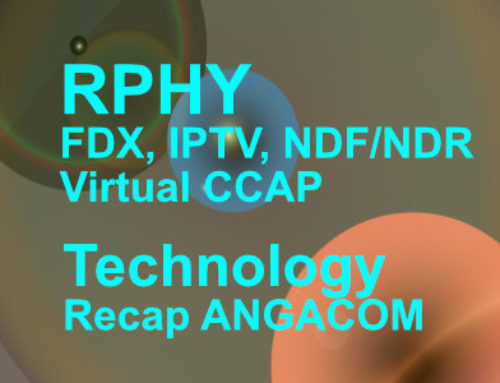DOCSIS Channel Emulator – Impairments Made Easy by Averna
While at ANGACOM this year I came across Averna’s DOCSIS Channel Emulator (DCE). It’s an interesting product that can be put to good use in an MSO lab, vendor lab or anyone needing to create real-world impairments that impact DOCSIS. Intrigued by the product, I followed up with Averna and got a hands-on demonstration at Averna’s Atlanta office.
Averna’s DOCSIS Channel Emulator – What’s Good…
So first, if you are doing DOCSIS testing, it is likely that you have an Averna DOCSIS 3.0 protocol analyzer. Their DP-360 is state-of-the-art and is built on the original Sigtek product which I cut my teeth on many years ago.
The DOCSIS Channel Emulator (DCE) is built on a National Instruments platform, which means it is modular and expandable. A single DCE module gives you the ability to receive up to eight (8) downstream DOCSIS channels, impair the DOCSIS channels and then retransmit them back into your DOCSIS network without loosing any timing or other relevant information, so your cable modems will be able to lock to the impaired channels.
So why would we want to intentionally impair DOCSIS downstream channels? Lot’s of reasons! For MSO’s the biggest reasons are in pre-production testing of new DOCSIS 3.0 cable modems, eMTAs and set-top boxes. Not all DOCSIS equipment is created equal, especially when it comes to the RF receivers in downstream channel bonding when impairments are present. So its better to discover the issues in the lab rather than after hundred’s of thousands of modems or set tops are deployed. Similarly if a new firmware version is deployed that causes issues under impaired conditions – this can be identified in the lab. So Averna’s DOCSIS Channel Emulator is perfect for recreating plant impairments for lab testing scenarios both for the device vendors and the MSOs, the later to make certain the device vendors did their testing. Test equipment vendors can benefit as well to ensure that their test meters are accurately making measurements under the many impairments that the DCE can create.
What type of impairments can Averna’s DOCSIS Channel Emulator create? This was quite an extensive list and driven to some extent off of the SCTE-40 Digital Cable Network Interface Standard, which is also used by many MSOs to test DOCSIS equipment. Here is the list of tests they currently support, with more under development:
- Additive white Gaussian noise (AWGN) – Broadband and on a single channel
- Amplitude ripple
- Continuous wave (CW) interference, multiple signals with distinct frequencies & levels
- This is also used to simulate CTB & CSO on a per-channel basis
- Each channel can be independently attenuated
- Group delay on a per channel basis
- Micro-reflections
- Phase noise
A unique aspect of the DOCSIS Channel Emulator is that it will take the set of DOCSIS channels and break them down into individual channels off of the coax. Then each channel can be independently impaired. Anyone familiar with digital signal processing (DSP) recognizes the challenges involved with this. However the value is that being able to manipulate each channel independently is vastly powerful from an impairment standpoint as it enables more realistic plant impairment conditions. While Averna cannot simulate every impairment that I could think of, they are in the process of adding more impairments to their library, making this a very powerful product.
Further, if you want to impair more than eight (8) downstream channels, the National Instruments chassis will support it simply by adding additional modules. So with two modules you can easily impair 16 channels or with four (4) you can impair 32 channels.
Below is a great visualization of the user interface. The top portion of the screen shows eight (8) DOCSIS downstream channels as they enter the Averna DOCSIS Channel Emulator. The channels are in near pristine condition. The DCE adds a host of impairments to each channel, resulting in the output, bottom screen, that will make channel bonding challenging for some DOCSIS devices.
What would be even better…
So what’s on my wish list from Averna? All of this downstream is great and I really want a notch filter function, which they hinted might be on the way. But let’s face it, the upstream is necessary. So I would love to see Averna apply the work they have done so far on the downstream to the upstream. It would be quite valuable to impair upstream channels, both single and bonded channels, for DOCSIS devices and see how they perform. Having both downstream and upstream impairments in the same platform would be a very powerful system
You can find out more about Averna’s DOCSIS Channel Emulator (DCE) from their website.







Leave a Reply